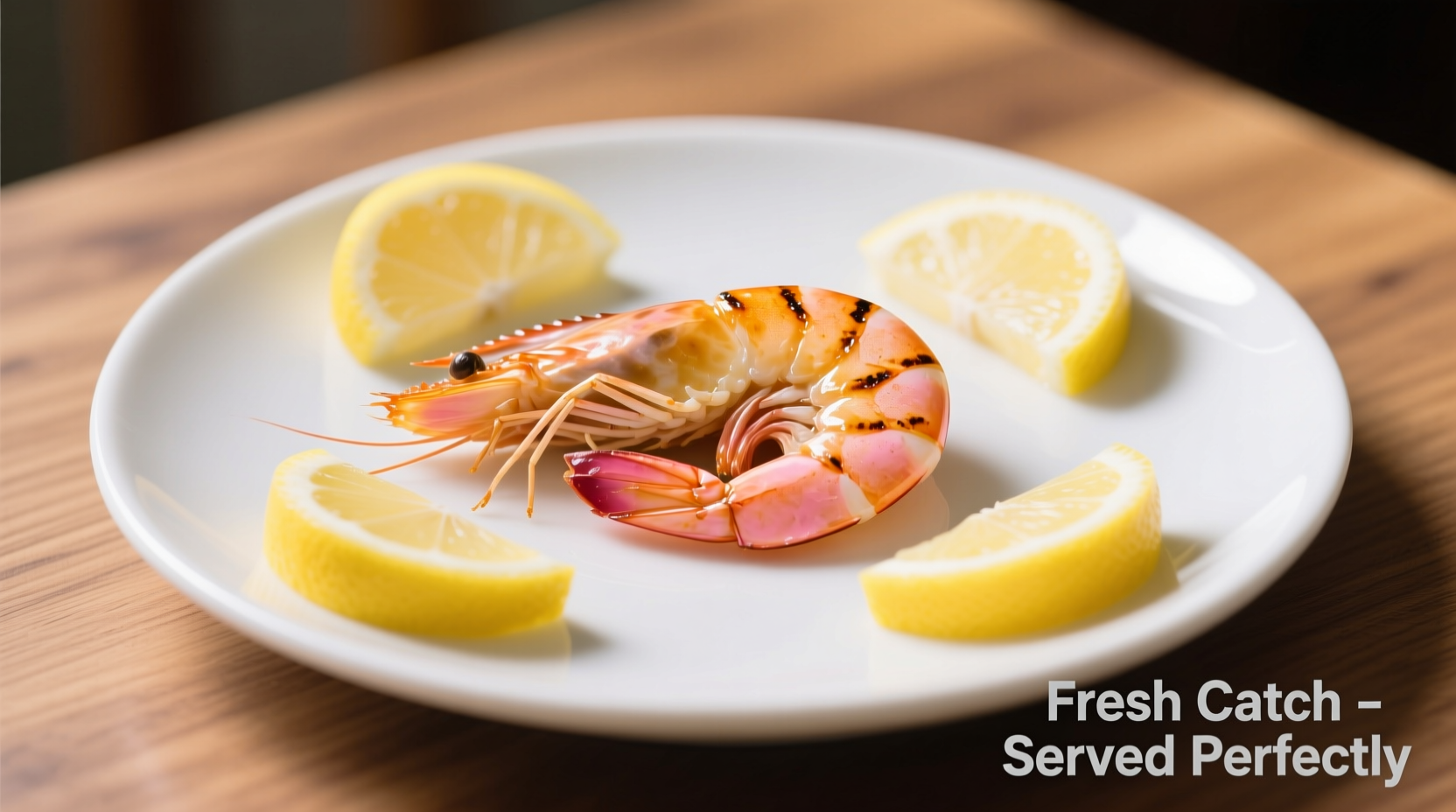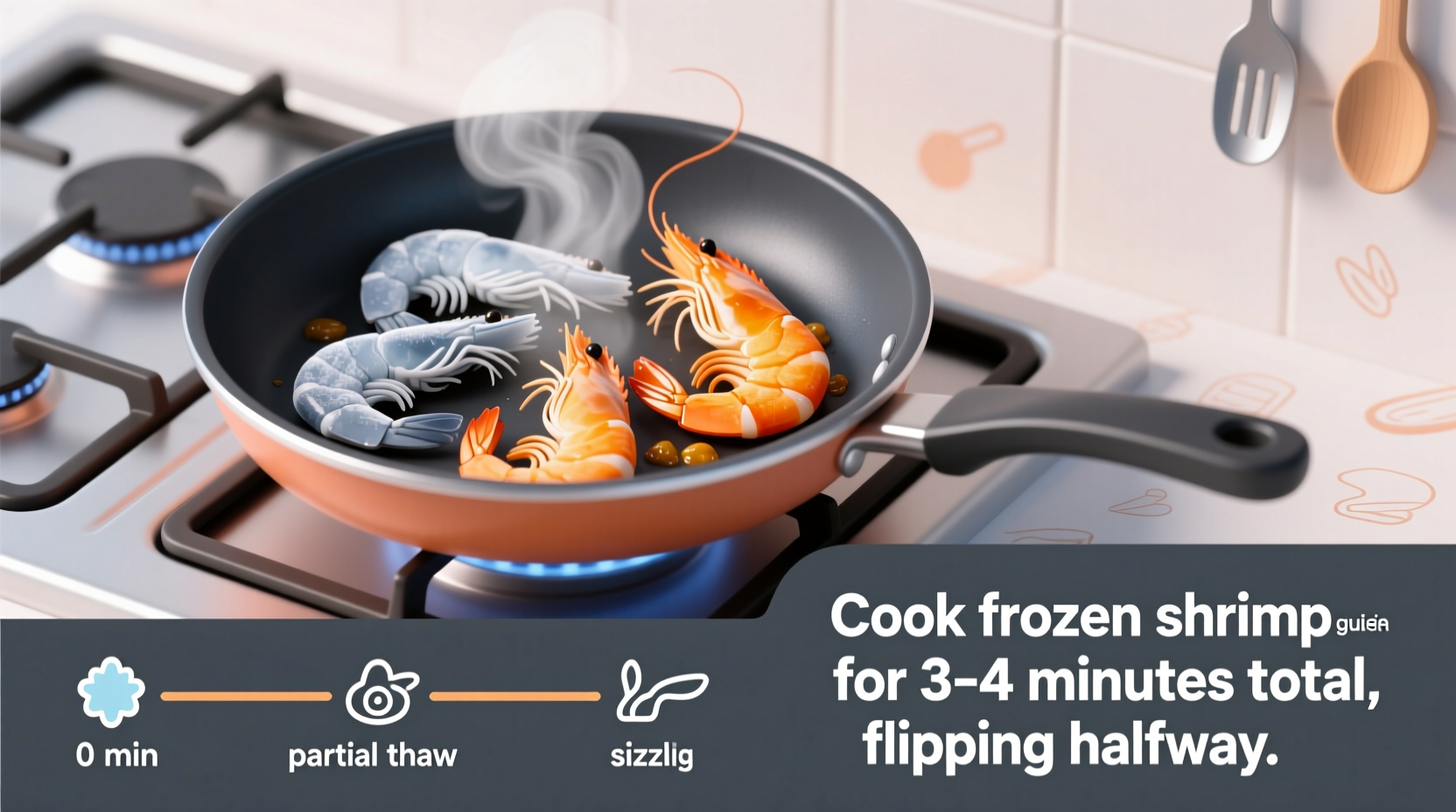Ever pulled rubbery, overcooked shrimp from the pan and wondered where you went wrong? You're not alone. Getting frozen shrimp perfectly cooked—tender, juicy, and flavorful—hinges on precise timing and technique. This guide reveals exactly how long to cook frozen shrimp using every method, with science-backed timing that prevents the common pitfalls that ruin texture. Whether you're pan-searing, boiling, baking, or grilling, you'll learn the exact minutes needed for restaurant-quality results every time.
Understanding Frozen Shrimp Basics
Before diving into cooking times, it's crucial to understand what happens when shrimp freezes. Ice crystals form in the muscle fibers, which affects how they respond to heat. Raw frozen shrimp needs proper cooking to denature proteins without squeezing out moisture. Pre-cooked frozen shrimp only requires reheating—a critical distinction that determines your cooking time.
| Type of Frozen Shrimp | How to Identify | Required Cooking Approach |
|---|---|---|
| Raw Frozen Shrimp | Translucent gray-blue color, firm texture | Must reach 145°F (63°C) internal temperature |
| Pre-Cooked Frozen Shrimp | Pink color, slightly softer texture | Reheat only (2-3 minutes max) |
According to the FDA Food Code, raw shrimp must reach 145°F (63°C) internal temperature for food safety. This temperature threshold ensures harmful bacteria are eliminated while preserving optimal texture.
Thawed vs. Frozen: Which Method Wins?
Many home cooks automatically thaw shrimp before cooking, but this isn't always necessary—and can sometimes hurt results. Here's when to skip thawing:
- When cooking methods involve high, direct heat (pan-searing, grilling, air frying)
- When using small-to-medium shrimp (under 30 count per pound)
- When following precise timing guidelines (critical for frozen cooking)
Thawing becomes necessary when:
- Cooking large shrimp or prawns (21-25 count or larger)
- Using delicate methods like poaching
- Preparing cold dishes like shrimp salad
For safe thawing, the USDA Food Safety and Inspection Service recommends either 12-24 hours in the refrigerator or the cold-water method (submerging sealed shrimp in cold running water for 10-15 minutes).
Precise Cooking Times for Every Method
Timing varies dramatically based on cooking method. These guidelines work for raw frozen shrimp (4-6 ounces per serving):
Pan-Searing (Best for Flavor)
Cooking time: 2-3 minutes per side
Heat 1 tablespoon oil in a skillet over medium-high until shimmering. Pat frozen shrimp dry with paper towels (critical step!). Season and cook untouched for 2 minutes until golden. Flip and cook 1-2 more minutes until opaque. The Culinary Institute of America notes that searing frozen shrimp creates a superior crust because surface moisture evaporates faster.
Boiling (Quickest Method)
Cooking time: 3-5 minutes
Bring 4 cups water with 1 tablespoon salt to rolling boil. Add frozen shrimp and return to simmer. Cook 3-5 minutes until pink and curled. Immediately transfer to ice bath to stop cooking. Larger shrimp (21-25 count) need the full 5 minutes; smaller (41-50 count) only 3 minutes.
Baking (Hands-Off Approach)
Cooking time: 8-10 minutes at 400°F (200°C)
Toss frozen shrimp with 1 tablespoon oil and seasonings. Spread in single layer on parchment-lined baking sheet. Bake until opaque throughout. Stir halfway through cooking. Baking frozen shrimp takes 2-3 minutes longer than thawed, but eliminates uneven cooking from partial thawing.
Grilling (For Smoky Flavor)
Cooking time: 2-3 minutes per side
Preheat grill to medium-high (400°F/200°C). Thread frozen shrimp onto skewers (soak wooden skewers first). Grill 2 minutes per side. Frozen shrimp holds together better on the grill than thawed, which can fall through grates.
Air Frying (Crispy Texture)
Cooking time: 5-7 minutes at 390°F (199°C)
Toss frozen shrimp with 1 teaspoon oil. Cook in single layer without crowding. Shake basket at 3 minutes. Air frying frozen shrimp creates exceptional crispness because the intense dry heat rapidly evaporates surface moisture.
How to Tell When Shrimp is Perfectly Cooked
Timing provides a baseline, but visual cues are more reliable. Perfectly cooked shrimp shows these characteristics:
- Color change: Translucent gray to opaque pink-orange
- Shape: Forms a loose “C” (tight “O” means overcooked)
- Texture: Firm but still slightly springy to touch
- Internal temperature: 145°F (63°C) at thickest part
Overcooked shrimp becomes tough and rubbery as proteins tighten excessively. The National Center for Home Food Preservation confirms that shrimp continues cooking for 1-2 minutes after removal from heat—always pull it off 5 degrees below target temperature.

Pro Tips for Foolproof Results
Follow these chef-tested techniques for consistently perfect shrimp:
- Dry thoroughly: Pat frozen shrimp with paper towels before cooking—wet shrimp steams instead of sears
- Avoid overcrowding: Cook in batches if needed; crowded pans lower temperature
- Season after cooking: Salt draws out moisture—season raw shrimp only with pepper, add salt after cooking
- Use high smoke-point oils: Avocado or grapeseed oil (400°F+ smoke point) works better than olive oil
- Rest briefly: Let shrimp sit 2 minutes after cooking for even temperature distribution
Common Mistakes That Ruin Shrimp
Avoid these timing-related errors:
- Guessing doneness by time alone: Shrimp size and starting temperature dramatically affect cooking time
- Not adjusting for frozen state: Cooking frozen shrimp as if thawed guarantees overcooking
- Boiling too vigorously: Rapid boiling makes shrimp tough—simmer gently after adding shrimp
- Skipping the ice bath: For boiled shrimp, immediate cooling preserves texture
- Cooking with tails on: Tails insulate the meat, causing uneven cooking
Storage and Reheating Guidelines
Cooked shrimp keeps for 3-4 days in airtight containers in the refrigerator. For best results when reheating:
- Skillet method: 1-2 minutes over medium heat with splash of water
- Steaming: 2-3 minutes until heated through
- Avoid microwaving: Creates uneven heating and rubbery texture
Never refreeze cooked shrimp—the texture deteriorates significantly. Freeze only raw shrimp for best quality.
Frequently Asked Questions
Can I cook frozen shrimp without thawing?
Yes, and it often produces better results than partially thawed shrimp. High-heat methods like pan-searing, grilling, and air frying work best with frozen shrimp. Just increase cooking time by 1-2 minutes and watch closely for visual doneness cues.
Why does my frozen shrimp turn out rubbery?
Rubbery texture comes from overcooking—shrimp cooks extremely fast. Frozen shrimp typically needs 30-60 seconds less time than thawed because the cold center prevents even cooking. Always remove shrimp from heat when it's slightly underdone, as carryover cooking will finish the process.
How long to cook frozen shrimp in an Instant Pot?
For raw frozen shrimp, use the steam function for exactly 1 minute with quick release. Longer cooking makes shrimp tough. Pre-cooked frozen shrimp only needs 30 seconds to heat through.
Should I devein frozen shrimp before cooking?
Yes, but it's easier when partially thawed. Run frozen shrimp under cold water for 30 seconds until pliable enough to devein with a toothpick, then cook immediately. The vein doesn't affect cooking time but improves texture and appearance.











 浙公网安备
33010002000092号
浙公网安备
33010002000092号 浙B2-20120091-4
浙B2-20120091-4